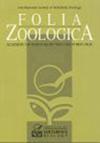Sexual dimorphism of craniological characters in the European badger, Meles meles, (Carnivora, Mustelidae) from the Western Carpathians
Q2 Agricultural and Biological Sciences
引用次数: 1
Abstract
Abstract. In the Carpathian population of the European badger, existing studies show a considerable discrepancy in the level of sexual dimorphism. The main goal of the study was to assess the sexual size dimorphism of the Carpathian Meles meles population in the light of the main hypotheses explaining this phenomenon. We measured 22 craniometric characteristics on sexed skulls of adult specimens from the Western Carpathians and assessed the morphological differences between males and females. A multi-model approach combined with predictive modelling was used to identify craniological parameters that discriminate badger sexes. The sexual size dimorphism was manifested mainly in differences of the feeding apparatus. The inner (IMW) and outer width of mandible (OMW) showed the highest power to discriminate between males and females (classification accuracy > 80 %). The IMW and OMW of 30 and 69 mm, respectively, may be used as rough threshold values for determination of the badger sex in the Western Carpathians. Our results seem to be in accordance with the hypothesis of sexual selection. We suppose that more even distribution of small families or individuals in the mainland Europe implicates higher level of mating competition which leads to favouring bigger and stronger males. We suppose also some role of a predatory selection by large carnivores and competition with other burrowing species leading to a potentially higher survival chance of bigger individuals in the Carpathians.西喀尔巴阡山脉欧洲獾(食肉目,鼬科)颅骨特征的两性二态性
摘要在喀尔巴阡山脉的欧洲獾种群中,现有的研究表明,两性二态性的水平存在相当大的差异。本研究的主要目的是根据解释这一现象的主要假设,评估喀尔巴阡Meles Meles种群的性别大小二态性。我们测量了来自西喀尔巴阡山脉的成年标本的22个颅骨特征,并评估了男性和女性的形态学差异。采用多模型方法结合预测建模来识别区分獾性别的颅学参数。雌雄大小二态性主要表现在取食器的差异上。下颌骨内宽度(IMW)和外宽度(OMW)对男性和女性的区分能力最强(分类准确率> 80%)。IMW和OMW分别为30和69 mm,可作为确定西喀尔巴阡山脉獾性别的粗略阈值。我们的研究结果似乎与性选择假说是一致的。我们认为,在欧洲大陆,小家庭或个人的分布更加均匀,意味着更高水平的交配竞争,从而导致更大更强壮的雄性。我们还认为,在喀尔巴阡山脉,大型食肉动物的捕食选择和与其他穴居物种的竞争,可能会导致体型较大的个体有更高的生存机会。
本文章由计算机程序翻译,如有差异,请以英文原文为准。
求助全文
约1分钟内获得全文
求助全文
来源期刊

Folia Zoologica
生物-动物学
CiteScore
1.70
自引率
0.00%
发文量
0
审稿时长
3 months
期刊介绍:
Information not localized
 求助内容:
求助内容: 应助结果提醒方式:
应助结果提醒方式:


